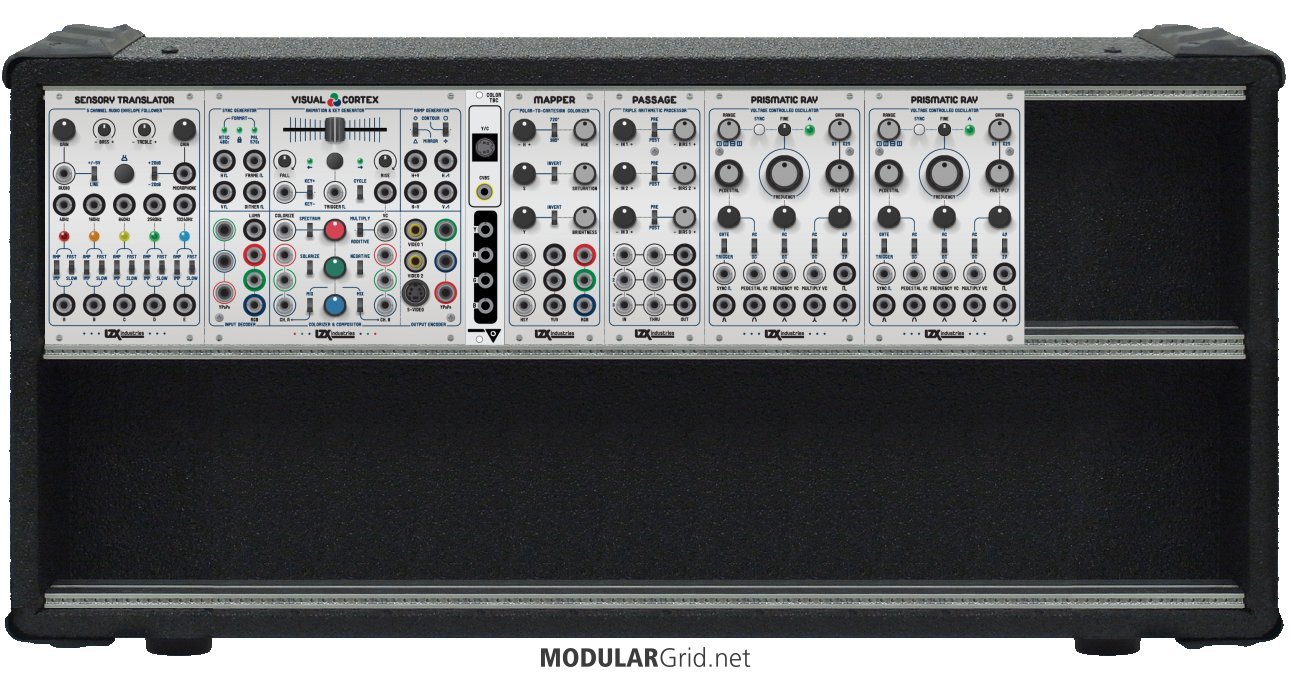Visual Cortex: Basic all in one unit, mixer, keyer, decoder, encoder, ramps, sync generator, etc: Get video in and out and more.
Audio Translator: direct input and/or internal mic external audio visualizer. 5 fixed band pass filters to extract the different frequencies of an audio signal with 3 setting fixed envelopes for fades and stuff
Color TBC: video input device that will take any signal and put it into the lzx system with no need to sync. This may be more of an optional module for you. The visual cortex will sync to an external device but if you want it to be the master sync source the device you input will need to have gen lock abilities. Also, if you are into internal feedback, which I have been heavily experimenting with of late, you will want this
Passage: utility mixer/attenuator type module. This is also optional but you may want to get some cadet crossfaders and or processors to replace it. This will let you take signals, particularly modulation sources and mix them together in a more controlled way than an audio mixer would.
Mapper: crazy color warp man. can do really strange things with colorizing. I have two.
prismatic Ray x2: awesome shaper all round good module, get at least one, but you will want more.
That is a few $100 or your budget but that set up will be really nice and is all available less the vc though the visual cortex restocks are set for November I think
Cadet modules are super. Nice to have. Do lots. If you are handy with the solder, you can make these from the schems Lars provides on the site. I would also recommend building a few each of the differentiators and function generators.


